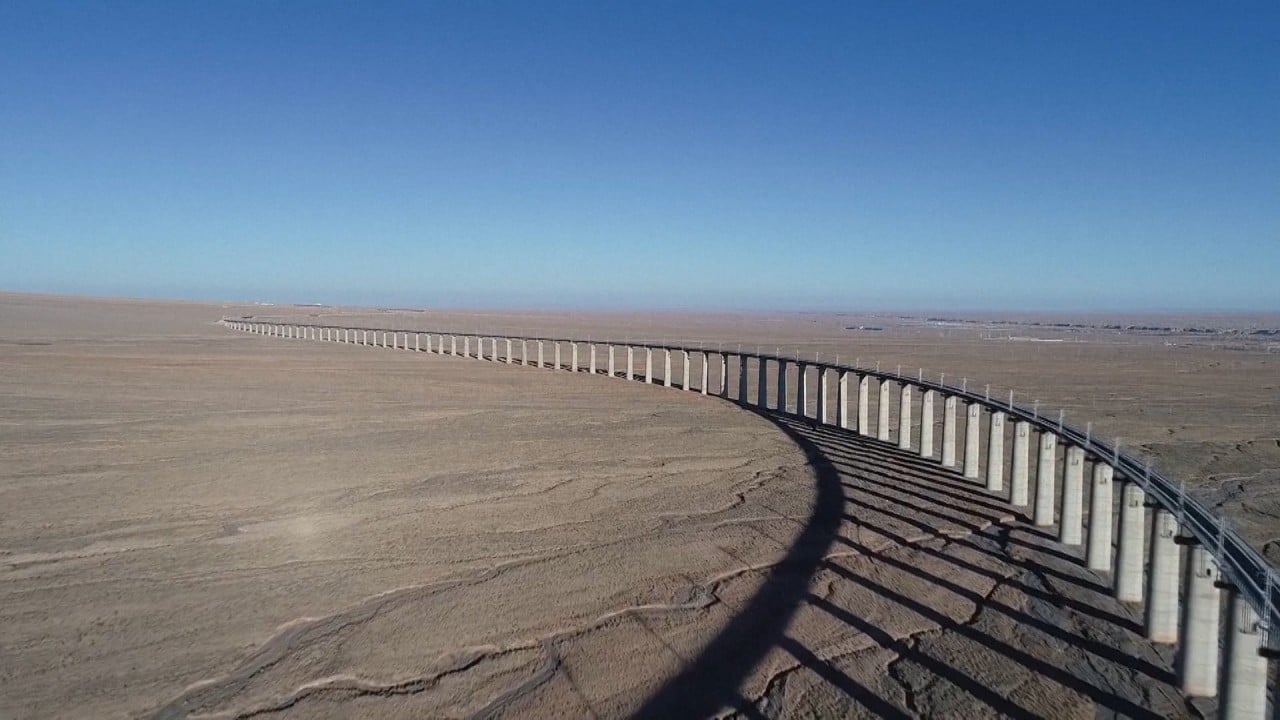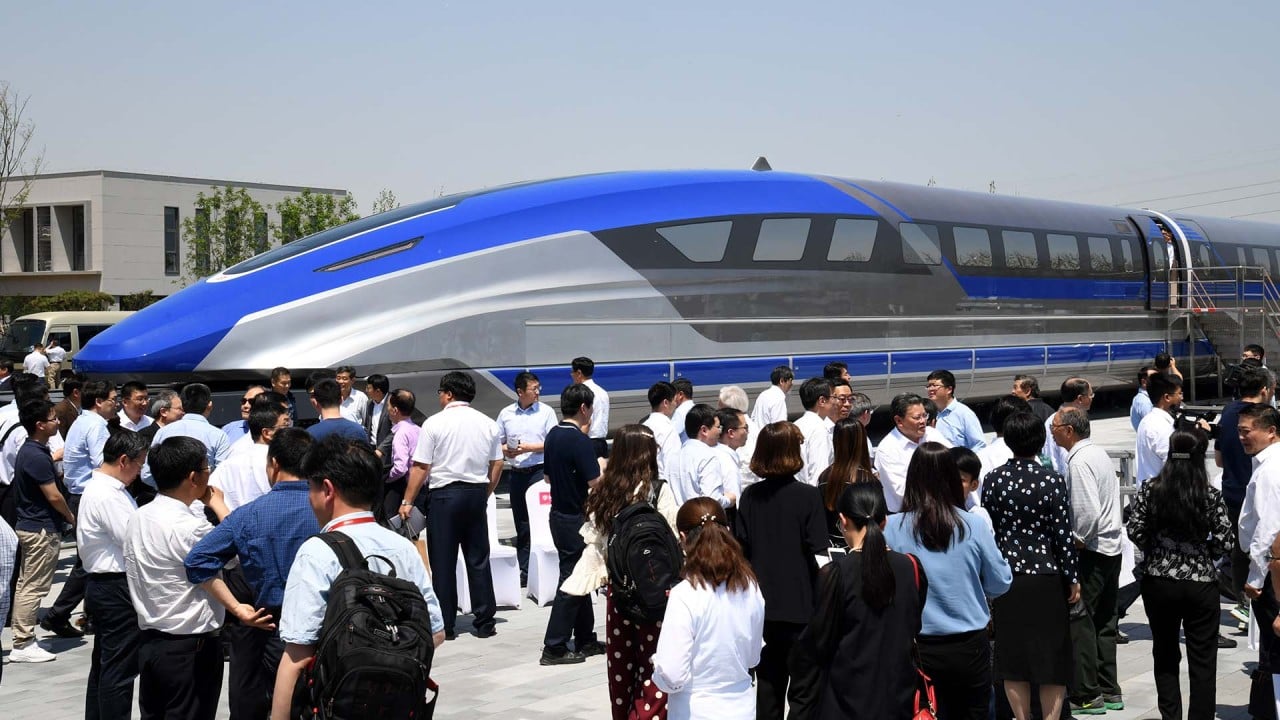
China’s high-speed railway network to double in length by 2035 under new blueprint
- Investment boom is set to continue until 2035 under a new plan released by state-owned China Railway Group
- State-led railway spending has been a fixture of growth over the past decade, and the scheme comes as Beijing puts new focus on developing the domestic economy
Under the plan, China will construct about 200,000km (125,000 miles) of railways by 2035, a milestone year in which the nation is set to achieve President Xi Jinping’s vision for a “modern socialist country”.
That will mean a 41 per cent increase in rail lines criss-crossing the country, up from the 141,400km today, including about 70,000km of high-speed tracks that will be able to handle speeds of more than 250km/h (155mph).
China had roughly 36,000km of high-speed rail lines at the end of July, accounting for more than two-thirds of the global total.

00:50
China’s new railway makes circular network with Qinghai, Tibet and Xinjiang lines
China’s high-speed railway boom started in 2008 when it adopted an all-out stimulus to bolster growth in response to the global financial crisis.
Extending the railway network is seen by Beijing as not only a short-term remedy to help steady economic growth, but a long-term strategy to bind the vast country into a single market.
Exports can no longer be relied upon, and property speculation will be curbed, so infrastructure investment is the last pillar that shouldn’t fall
Larry Hu, chief China economist with Macquarie Capital, said the blueprint reflects Beijing’s intention to sustain domestic growth with infrastructure spending.
“China’s economic growth has three pillars: exports, property and infrastructure investment,” Hu said. “Exports can no longer be relied upon, and property speculation will be curbed, so infrastructure investment is the last pillar that shouldn’t fall.”
China’s high-speed railway is a source of pride for the country, and it has tried to export its technology and expertise abroad, especially to countries taking part in the Belt and Road Initiative.
Xi’s slogan of fuxing, or rejuvenation, has been used to name the next-generation bullet trains that are set to completely replace the Hexie series built under former president Hu Jintao.

01:01
China unveils ground-breaking high-speed maglev train prototype
While China’s railway system is heavily indebted on the whole, some of the high-speed railway lines, including the one connecting Beijing and Shanghai, have already started seeing operating profits. This offers hope that China’s high-speed railway lines can be financially sustainable as long as there is enough market demand.
Under the new blueprint, all towns with at least 200,000 residents will be connected to the railway system by 2035, while every city with more than half a million residents will have access to high-speed railway lines.
Shen Jianguang, a veteran Chinese economist who now works for JD Digits, a subsidiary of e-commerce giant JD.com, said the 2035 railway plan will serve China well when there are multiple urban centres across the country.
It is a blueprint for 2035, when China will be much richer and more prosperous than today
“If we look at the domestic migration in recent years, we can see a clear trend that migrant workers from central and western regions are more willing to take jobs in nearby cities instead of flocking to the coastal areas,” Shen said. “If you look at places such as Xi’an and Lanzhou, these western cities are emerging as regional economic hubs.
“It is a blueprint for 2035, when China will be much richer and more prosperous than today. It makes sense to connect every city with half a million people into the high-speed railway network – Frankfurt became the economic heart of Germany when its population was about half a million.”
China Railway Group said the country will deploy a range of critical and core technology by 2035, including special materials for tracks, and intelligent operating systems in trains.

